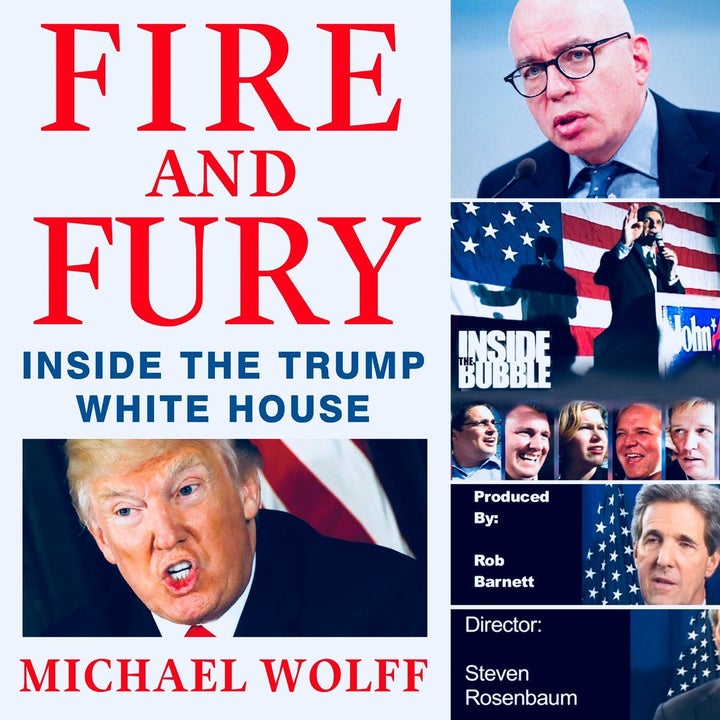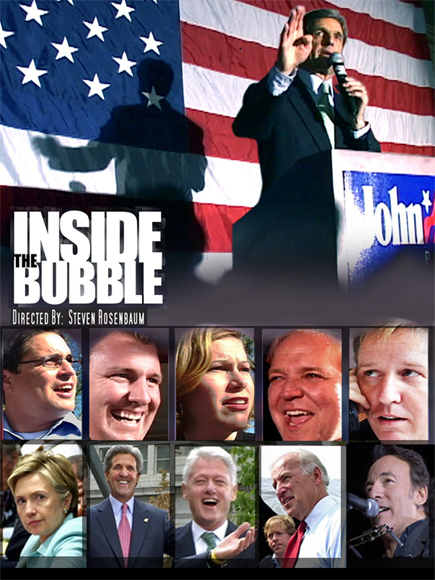Well, there’s a simple fact - people want to talk, they just need to be coaxed.
Let’s look at the ultimate insider film about a political campaign - DA Pennebaker and Chris Hegedus’s “The War Room.” Who is the star of The War Room? Is it Bill Clinton? Hardly, he’s only in the film for a few minutes. The stars are James Carville, George Stephanopoulos, and Paul Begala- three campaign insiders who would have remained virtually anonymous if Clinton hadn’t won, and Pennebaker’s camera hadn’t been there to document the inner workings of the campaign.
Why let a documentary filmmaker see the inner workings of the campaign? It’s a risk that staffers are willing to take, because they believe they’re going to win, and they want their place in history recorded for all to see.
How do I know this? Because I did the same thing.
When John Kerry was running for president in 2004, his campaign team was a dedicated group of hard-working political operatives. Jim Loftus was the press handler, David Morehouse, Kerry’s traveling chief of staff, Marvin Nicholson Kerry’s ever-vigilant body man.
We set out to record the activities inside the Bubble, the traveling hermetically sealed unit that wraps the candidate in a sealed moving cocoon of safety. No one gets in, or out of the Bubble. But we did, and we did so because Loftus, Morehouse, and Nicholson wanted to have their efforts memorialized. They didn’t want to be forgotten by history.
Did we have ‘permission’ to be with the campaign? Um, sort of. Much like Wolff we got waved in, and given the secret thumbs up by Kerry’s closest handlers.
It’s worth noting that Stephanie Cutter, who was running press from the Washington DC campaign headquarters would come out on the road from time to time. And without fail, we were sent packing. What Cutter knew was that having a camera inside the campaign was not a good strategic decision. If they won, then the story of how the staffers worked would be far less important than how they were going to govern. And if they lost? Well, that most certainly didn’t want to be recorded for posterity.
She was right of course, and we had to sidle our way back to our campaign insiders - and get the secret blessing to get back on the bus and get inside the nightly slug fest that was life on the campaign.
What we captured was telling. Was their handling of the New York Times sloppy or lazy? Michael Wolff, who served as our voice of political experience in the film - pulled no punches. “It’s their JOB to manage the press, not to complain about coverage” he said after seeing the film. And what about the pony? Jim Loftus wanted a pony in Marvin’s room to celebrate his birthday? But he said with anger and frustration - “No pony. Not even a Goat in lingerie. We got a blow-up sheep. Lazy, shitty staff work.”
And - even then - more than ten years ago, Wolff went out of his way to blast Stephanie Cutter. “She’s a nightmare, unable to work with the press or manage journalists - which was her JOB,” said Wolff back when he was covering the Kerry campaign.

So, how did he get into the Trump inner circle? It’s simple. He convinced Steve Bannon that he was going to win, and after he won, he convinced Bannon that his work as a brilliant political strategist risked being left on the dustbin of history unless a journalist was allowed to come in, record quotes and dates and facts and events, and then lionize Bannon in a book that would forever record his activities for history to remember.
But, like the scorpion and the frog - Wolff was able to convince the frog (Bannon) to climb on the lily pad. And then, as the frog was stung and dying - Bannon asked plaintively… “But, Why?” To which the Scorpion/Journalist replied - “It’s my nature.”
Journalists, wether print or documentary filmmakers - are going to record what they see. And then, they’re going to tell the story. If Kerry had won the playful backroom banter and the blow-up sheep would have been proof that these collegial, driven staffers had the right stuff to win. But when the lost, those same scenes play like an indictment. No matter that Kerry was distant, aloof, and somewhat unable to connect with voters. He’s in the background of “Inside The Bubble” so his staff takes the heat.
And Wolff’s ability to charm, engage, and insinuate himself inside closed worlds shouldn’t have come as a secret. His book about his internet Startup “Burn Rate” made him no friends in the digital world. And his book about Rupert Murdock, “The Man Who Owns The News” hardly made hime a Fox favorite. Had Bannon checked, he could have found clips of Wolff commenting with his acerbic tone throughout “Inside The Bubble” and that alone might have caused some trepidation.

Watch the film for free - here: http://bit.ly/InsideTheBubble
But political folks believe they’re going to win. They believe history will want to see the inside story of political victory. And only after Wolff was inside, and the facts presented themselves, and Bannon was fired, and the Trump campaign stopped noticing that he was sitting on the couch in the West Wing, was he able to witness and record what we now all know is the truth.
A dysfunctional, fractious, battleground of a White House, with Donald Trump facing criticism that those closest to him think he’s lost the mental acuity required to do the job. Wolff will go down as a witness to history, and Fire and Fury will take its place as an essential piece of documentary journalism. Now the question is - what do we do about it?
